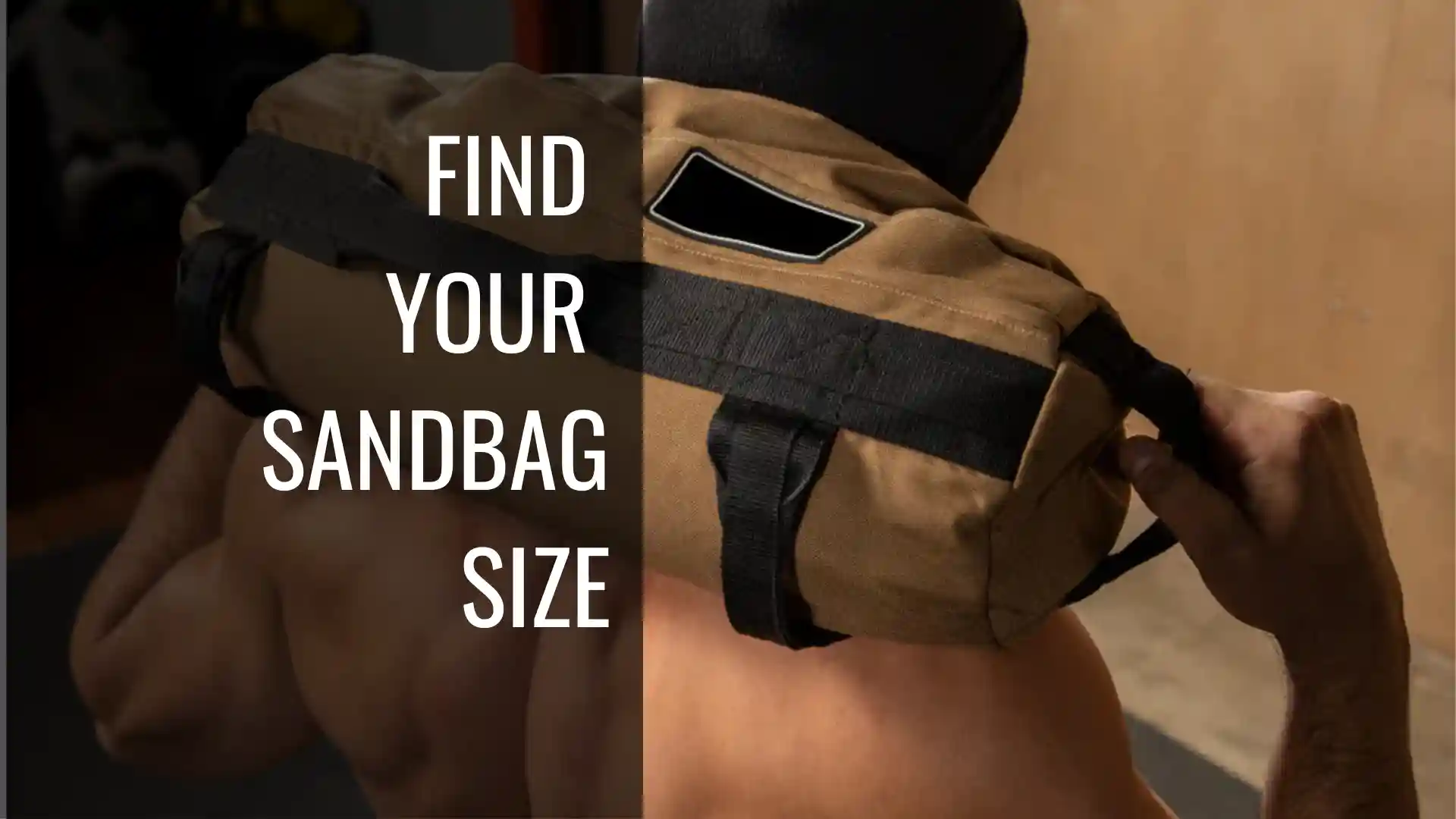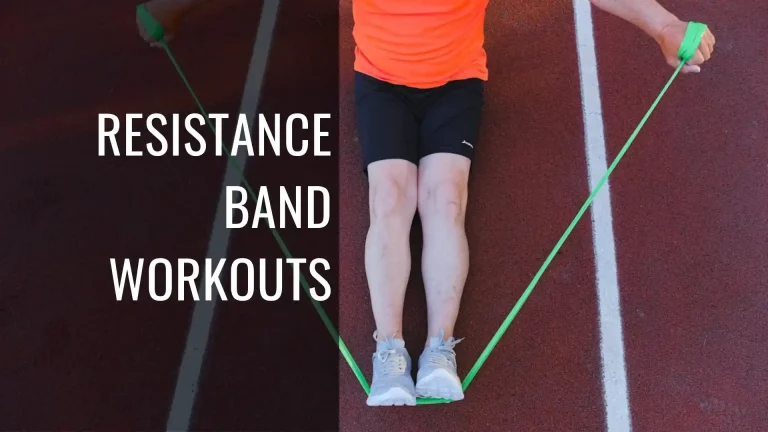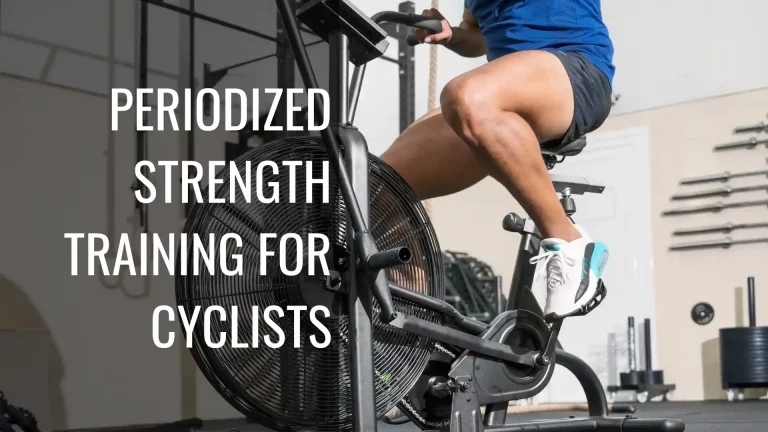
In this blog post, we’ll guide you through the process of finding your ideal sandbag size by evaluating your fitness level, training goals, and personal preferences. Discover how to tailor your sandbag weight to create engaging, effective, and personalized workouts that help you reach your full potential.
PEDAL MY WAY NEWSLETTER
Weekly training tips, cycling strategies, and fitness insights for sustainable performance.
No spam—just actionable guidance to help you train smarter.
Table of Contents
Understanding Sandbag Weight Categories: From Beginner to Advanced Training
Sandbag training offers a versatile and effective way to improve your fitness, with various weight categories catering to different fitness levels and goals. Whether you’re a beginner or an advanced athlete, it’s essential to choose an appropriate sandbag weight to get the most out of your workouts.
Here’s a general guide for selecting sandbag weights based on your experience level:
Beginner
New to Sandbag Training or Strength Training) Weight: 20-40 lbs (9-18 kg)
Ideal for:
- New lifters
- Cardio/metcon workouts
- Rehab or mobility work
Focus:
- Learning movement patterns (cleans, presses, carries)
- Improving form and control
- Higher reps, lower resistance
Examples:
- 15 lb sandbag for squats, deadlifts, overhead holds
- 20 lb for basic carries, core work
Intermediate
Some Lifting Experience, Comfortable with Functional Movements) Recommended Weight: 40-60 lbs (18-27 kg)
Ideal for:
- Those with a few months of training experience
- General strength and conditioning\
Focus:
- Combining strength and endurance
- Dynamic movements (sandbag shouldering, rotational lifts)
Mid-rep ranges (8–12)
Examples:
- 40 lb for clean & press circuits
- 50 lb for front-loaded lunges, carries, squats
Advanced
Experienced Lifter, Solid Strength Foundation). Recommended Weight: 60-80 lbs (27-36 kg) or heavier
Ideal for:
- Advanced lifters or athletes
- Functional strength and power
Focus:
- Low-rep, high-intensity lifts
- Grip, core, and full-body strength
- Carries, deadlifts, heavy cleans
Examples:
- 80 lb sandbag for bear hug carries
- 100+ lb for sandbag loading, shouldering, zercher squats
Remember that sandbag weight recommendations can vary based on your personal fitness level, goals, and the specific exercises you’re performing. Adjust the weight as needed to ensure you’re getting the most out of your sandbag workouts while staying safe and injury-free.
Choosing the Right Weight
| Movement Type | Suggested Load (Relative to Experience) |
|---|---|
| Carries | Light to heavy (progress over time) |
| Cleans/Shoulders | Moderate to heavy |
| Overhead Press | Light to moderate |
| Conditioning Work | Light for speed, moderate for power |
| Squats/Deadlifts | Moderate to heavy |
Progressing Safely
Start lighter than you think—sandbags are awkward!
Focus on form and control first.
Add 5–10 lbs as movements feel smoother.
Mix grip positions (handles, bear hug, zercher) to challenge muscles differently.
Pro Tip
A single sandbag with adjustable filler bags (10–60 lbs) can cover most training needs for beginners to intermediate users. Add heavier bags later as you grow.
How Your Fitness Level Determines Your Ideal Starting Weight
- If you’re new to strength training or functional fitness, start with a lighter sandbag weight, typically ranging from 20-40 lbs (9-18 kg).
- Learn technique: squats, deadlifts, carries
- Full-body workouts focused on form over intensity
- Use handles first, progress to bear hug/zercher holds
- If you have some lifting experience and are comfortable with various functional movements, you can opt for a medium sandbag weight, ranging from 40-60 lbs (18-27 kg).
- Add power-based moves (cleans, shouldering)
- Increase time under tension and carry distances
- Mix handle and awkward grips (hug, shoulder)
- Experienced lifters with a solid strength foundation can begin with heavier sandbag weights, usually ranging from 60-80 lbs (27-36 kg) or more.
- Low-rep max-effort lifts (sandbag over shoulder, loading)
- Heavy carries, zercher squats, and functional strongman circuits
- Grip-challenging, no-handle options
Key Factors to Consider (Regardless of Level)
| Factor | Impact on Weight Choice |
|---|---|
| Workout goal | Conditioning = lighter; Strength = heavier |
| Grip strength | Weak grip = start lighter, avoid no-handle bags |
| Movement type | Carries = heavier; Overhead = lighter |
| Sandbag type | Loose-fill bags feel heavier than compact ones |
Pro Tips
Start with a modular sandbag that allows you to add or remove filler bags.
Use bear hug or zercher carries before overhead movements to build foundational strength.
Prioritize form and consistency before increasing weight.
Matching Sandbag Size to Your Specific Training Goals
Strength and Power Development
- Choose a heavy sandbag (60-80 lbs or more) to focus on developing raw strength and power.
- Perform exercises that require explosive movements, such as sandbag cleans, presses, and throws.
- Ensure that you can still maintain good form and control with the heavier weight.
Muscular Endurance and Conditioning
- Opt for a medium-weight sandbag (40-60 lbs) to enhance muscular endurance and overall conditioning.
- Incorporate high-volume sets, complexes, or circuits with exercises like squats, lunges, and sandbag carries.
- This will challenge your muscles’ ability to sustain work over extended periods.
- Use a lighter sandbag (20-40 lbs) to emphasize proper movement patterns, stability, and core engagement.
- Practice exercises that demand balance, coordination, and proprioception, like Turkish get-ups, single-leg Romanian deadlifts, and rotational throws.
- This will help improve overall functional fitness and movement efficiency.
Max Strength/ Strongman Training
Focus: Lift heavy awkward loads for low reps
Recommended Sandbag Size:
- Use Heavy to very heavy sandbags (Women: 70–100+ lbs/ Men: 100–150+ lbs)
- Go for max-effort carries (bear hug, zercher)
- Sandbag loading over bar
- Heavy deadlifts or squats
Quick Reference Summary
| Training Goal | Sandbag Weight (Women) | Sandbag Weight (Men) | Best Sandbag Type |
|---|---|---|---|
| Conditioning | 10–30 lbs | 20–40 lbs | Compact, grippy handles |
| Functional Strength | 40–70 lbs | 60–100 lbs | Loose fill, large bags |
| Muscle Building | 30–50 lbs | 50–80 lbs | Balanced fill, mid-size |
| Power & Explosiveness | 30–60 lbs | 50–80 lbs | Tight fill, smaller size |
| Max Strength | 70–100+ lbs | 100–150+ lbs | Oversized, awkward bags |
The Difference Between Adjustable and Fixed-Weight Sandbags
Adjustable Sand Bags:
Adjustable sandbags allow you to change the weight by adding or removing filler bags (usually zippered pouches filled with sand or other material).
Advantages:
- Versatile: One bag = multiple weights (e.g., 20–60 lbs)Great for progression: Increase resistance as you get stronger
- Space-saving: Fewer bags to store
- Cost-effective: No need to buy multiple weights
Disadvantages:
- Use Heavy to very heavy sandbags (Women: 70–100+ lbs/ Men: 100–150+ lbs)
- Can feel awkward or uneven if filler bags shift
- Slightly more setup time before workouts
- May not feel as “solid” or balanced during dynamic movements
- Risk of filler leakage if zippers or seams wear out
Best For:
- Use Heavy to very heavy sandbags (Women: 70–100+ lbs/ Men: 100–150+ lbs)
- Beginners to intermediate users
- Home gyms or small spaces
- Functional and general fitness workouts
Fixed-Weight Sandbags
Fixed-weight sandbags are pre-filled sandbags with a set weight (e.g., 50 lbs, 80 lbs) that cannot be adjusted.
Advantages:
- Durable and reliable: Built for heavy use and high-impact training
- More even weight distribution — better for slams, throws, carries
- Feels closer to strongman training tools (stones, kegs, etc.)
- No shifting or filler bag movement
Disadvantages:
- Use Heavy to very heavy sandbags (Women: 70–100+ lbs/ Men: 100–150+ lbs)
- Less flexible — need multiple bags for different weights
- More expensive if you want a range of weights
- Takes up more space in storage
Best For:
- Use Heavy to very heavy sandbags (Women: 70–100+ lbs/ Men: 100–150+ lbs)
- Advanced users, athletes, or strongman training
- Power-focused workouts (cleans, carries, shouldering)
- Gyms or dedicated strength spaces
Quick Comparison Table
| Feature | Adjustable Sandbags | Fixed-Weight Sandbags |
|---|---|---|
| Weight Range | Variable (e.g., 20–60 lbs) | Set weight (e.g., 80 lbs) |
| Cost | More economical | Higher long-term cost |
| Convenience | Requires setup | Grab-and-go |
| Training Versatility | High | Lower unless you own several |
| Durability | Moderate to high | Very high |
| Ideal For | General fitness users | Advanced lifters, athletes |
Which one is best?
| You Should Choose… | If You… |
|---|---|
Adjustable Sandbag | Are just starting out, want variety, train at home, or have limited space |
| Fixed-Weight Sandbag | Focus on powerlifting/strongman, train heavy, or want commercial-grade gear |
Testing and Progressing: When It's Time to Size Up Your Sandbag
Knowing when to size up your sandbag is essential for continuing progress, avoiding plateaus, and keeping your training challenging. Here’s how to tell when it’s time to move to a heavier or larger sandbag — and how to do it safely.
- Comfort with Current Weight: If you can comfortably perform all your exercises with proper form and without feeling significantly challenged, it’s likely time to move up in weight.
- Repetition and Set Goals Achieved: If you’ve reached your target number of repetitions or sets for a particular exercise or workout, consider progressing to a heavier sandbag to keep challenging your body.
- Training Plateau: If you’ve noticed a plateau in your strength, endurance, or overall progress, increasing the sandbag weight may help you break through and continue making gains.
- Increased Strength and Conditioning: As your overall strength and conditioning improve, your body will adapt to the current sandbag weight. Progressing to a heavier sandbag will help ensure your workouts remain challenging and effective.
- Change in Training Goals: If your training goals shift towards strength or power development, you’ll likely need a heavier sandbag to achieve those objectives.
How to keep challenging yourself
Option 1: Add Weight to an Adjustable Bag
If you’re using an adjustable bag, start by:
Adding 5–10 lbs
Reassessing form and fatigue
Progress gradually to the bag’s weight capacity
Option 2: Upgrade to a Fixed-Weight or Heavier Bag
If you’re maxed out or using a fixed-weight bag:
Consider buying the next size up (e.g., move from 40 lb to 60 lb)
Switch up movement patterns (e.g., progress from carries to cleans or throws)
Don’t Size Up If:
You’re still struggling with form or stability
You’re using sandbags for rehab, recovery, or endurance circuits
You haven’t mastered multiple grip styles (handles, zercher, bear hug)
Final Tip: Track Your Progress
Keep a log of:
Workout intensity (RPE or effort level)
How fast you complete circuits
Grip/core fatigue and form breakdown
When these factors consistently show you’re cruising, it’s time to level up.
How Our Sandbag Sizing App Works
This web-based Sandbag Finder app is designed to help users quickly locate the ideal sandbag for their fitness needs. It features an intuitive interface where you can input your desired minimum and maximum weight, preferred material (Cordura Nylon, Heavy Duty Canvas, or PVC Coated Fabric), and a maximum price.
Once you click “Find Sandbags,” the application filters through a list of available sandbags and displays only those that match your criteria. If no sandbags fit the bill, a “No results found” message will appear.
So stop searching and start training smarter – give the sandbag finder a try today!



